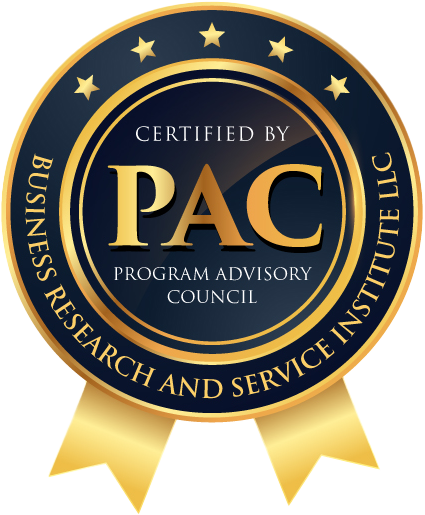In today’s competitive business landscape, cost reduction in the supply chain is a critical factor in maintaining profitability and gaining a competitive edge.
Effective cost reduction strategies can optimize the efficiency of your supply chain operations while ensuring the smooth flow of goods and services.
What is Supply Chain Cost Reduction?
Supply chain cost reduction means finding ways to cut costs in the process of getting products from suppliers to customers. This can include getting better deals with suppliers, improve the process, performing a better job of seeking out savings, and investment in technology. The goal is thus to reduce the cost as much as possible yet produce good quality products so as to make the customers satisfied.
Managing costs in the supply chain is a complex task that requires a holistic approach.
Cost Reduction Strategies in Supply Chain
In this article, we will outline 12 proven strategies to help you reduce costs in supply chain.
By employing the following strategies, you can identify opportunities for cost reduction and enhance the overall efficiency of your supply chain.

1. Streamline Inventory Management
Efficiently managing inventory is paramount to cost reduction in the supply chain. By optimizing inventory levels, you can minimize carrying costs and mitigate the risk of stockouts or obsolescence. Leverage inventory management systems to track demand patterns, establish reorder points, and implement just-in-time inventory practices. These measures will not only identify cost-reduction opportunities but also enhance the overall efficiency of your supply chain.
2. Improve Demand Forecasting
Accurate demand forecasting enables you to align production and procurement activities with customer demand. By leveraging historical data, market trends, and predictive analytics, you can enhance forecast accuracy and avoid overproduction or understocking. This proactive approach helps reduce costs associated with excess inventory or lost sales, ensuring significant cost savings in the supply chain.
3. Optimize Transportation and Logistics
Transportation and logistics expenses often constitute a substantial portion of supply chain costs. To optimize your transportation network, consider consolidating shipments, utilizing intermodal transportation, and negotiating favorable freight rates. Implementing route optimization software and real-time tracking systems can further improve efficiency and reduce costs. These strategies seamlessly contribute to cost reduction in the supply chain, bolstering overall financial performance.

4. Enhance Supplier Collaboration
Cultivating strong relationships with suppliers can result in cost savings within the supply chain. Foster close collaboration with suppliers to negotiate favorable pricing, explore joint cost reduction initiatives, and enhance supply chain visibility. Implement supplier cost reduction strategies, vendor-managed inventory systems and establish long-term partnerships to achieve mutually beneficial outcomes, including reduced expenses in the supply chain.
5. Implement Lean Manufacturing Principles
Implementing lean manufacturing principles focuses on eliminating waste and improving productivity. By adopting practices such as just-in-time production, value stream mapping, and Kaizen events, you can streamline operations, reduce inventory, and optimize resource utilization. Lean manufacturing helps drive down costs while upholding quality and customer satisfaction, thereby reducing expenses within the supply chain.

6. Embrace Technology and Automation
Harnessing the power of technology and automation solutions can significantly reduce costs in the supply chain. Implement advanced analytics, Internet of Things (IoT) devices, and robotic process automation (RPA) to improve efficiency, enhance visibility, and eliminate manual errors. Automated order processing, inventory tracking, and demand forecasting systems save time and resources, making a tangible impact on cost reduction in the supply chain.
7. Focus on Sustainable Practices
Sustainability initiatives not only benefit the environment but also lead to cost savings. Reduce energy consumption, minimize waste generation, and adopt eco-friendly packaging materials to lower expenses in the supply chain. Implementing sustainable practices can attract environmentally conscious customers, reduce compliance costs, and improve brand reputation, resulting in substantial cost reduction.

8. Consolidate Warehousing and Distribution
Consolidating warehousing and distribution operations can yield significant cost savings. By centralizing distribution centers, you can optimize inventory management, reduce transportation costs, and enhance order fulfillment efficiency. Consider implementing cross-docking, where feasible, to minimize handling and storage costs, effectively lowering expenses within the supply chain.
9. Negotiate Favorable Contracts
Negotiating favorable contracts with suppliers, carriers, and service providers plays a crucial role in cost reduction. Seek competitive bids, explore volume discounts, and establish long-term agreements to secure favorable pricing and terms. Regularly review contracts and renegotiate as necessary to adapt to changing market conditions, resulting in cost savings within the supply chain.
10. Implement Continuous Improvement Programs
Maintaining a focus on continuous improvement is essential in your supply chain management strategy. Encourage employee involvement in identifying and implementing process improvements. Embrace methodologies like Six Sigma and Total Quality Management (TQM) to eliminate defects, reduce lead times, and continuously optimize operations. These efforts lead to cost reduction and enhanced efficiency within the supply chain.

11. Foster Strong Relationships with Customers
Building robust relationships with your customers positively impacts cost reduction. You can tailor your supply chain operations to improve customer satisfaction and loyalty by understanding their needs and preferences. Promptly address customer concerns, offer personalized services, and ensure on-time deliveries to minimize costly returns and order cancellations. This customer-centric approach contributes to overall cost savings within the supply chain.
12. Optimize Packaging and Shipping Materials
Optimizing packaging and shipping materials significantly contributes to cost reduction in the supply chain. Consider utilizing lightweight yet durable packaging materials that provide adequate product protection. Properly sizing packaging can help minimize dimensional weight charges and optimize space utilization during transportation. Exploring alternative packaging options, such as eco-friendly or reusable materials, can reduce costs and support sustainability efforts while simultaneously improving cost efficiency within the supply chain.
Conclusion
Reducing costs in the supply chain is crucial for businesses to remain competitive and profitable.
By implementing these 12 strategies outlined in this article, you can optimize your supply chain operations, improve efficiency, and achieve significant cost savings.
Embrace technology, foster collaboration, and continuously strive for process improvement to create a lean and cost-effective supply chain.
Implementing these strategies will contribute to reducing expenses and enhancing financial performance in the supply chain.
FAQs (Frequently Asked Questions)
How long does it take to see cost reductions after implementing these strategies?
The timeline for cost reductions can vary depending on factors such as the complexity of your supply chain, the extent of implementation, and market conditions. However, with diligent execution, you can see noticeable improvements within six to twelve months.
Are these strategies applicable to all types of industries?
Yes, the strategies mentioned in this article can be applied to various industries. However, it’s important to customize and adapt them to suit your specific industry, supply chain structure, and business requirements.
Is it necessary to implement all 12 strategies?
No, the strategies presented here are meant to provide a comprehensive overview. Depending on your specific circumstances and priorities, you can select and prioritize the strategies that align with your business goals and objectives.
What are the potential risks associated with implementing these strategies?
Implementing any change in the supply chain involves certain risks. These may include initial costs, resistance to change, and potential disruptions during the transition phase. It’s important to plan and execute the strategies thoughtfully, involve stakeholders, and monitor progress closely.
How often should these strategies be reassessed and updated?
The dynamic nature of the business environment demands regular reassessment and updates to your supply chain strategies. Review the effectiveness of implemented strategies periodically, consider emerging trends, and make adjustments to ensure ongoing cost reduction and operational efficiency.
How can supply chain management reduce cost?
Supply chain management can reduce costs by improving efficiency at every step, such as negotiating better deals with suppliers, optimizing inventory levels to avoid overstocking or shortages, and streamlining transportation to lower shipping expenses. It also involves using technology to automate processes, reducing waste, and improving communication across the supply chain to prevent delays and errors.

Aftab Khan is a logistics specialist with over forty years of experience in all aspects of supply chain and logistics management. He is an engineer by training and holds an MBA, besides several certifications from APICS/ASCM, ISCEA, and BRASI. Mr. Khan is the Executive Director of Business Research and Service Institute LLC, USA.








